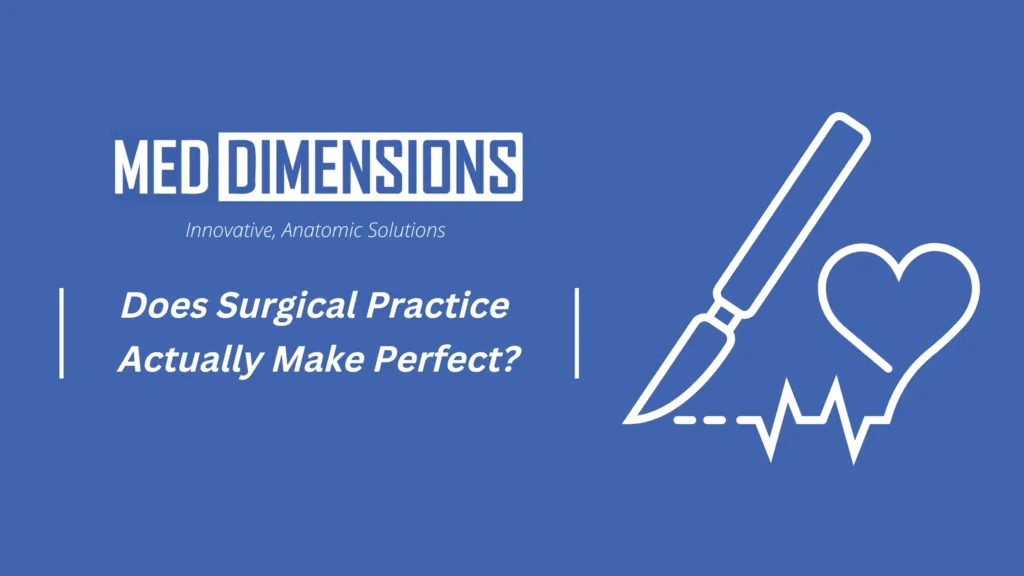Does Surgical Practice Actually Make Perfect?

Surgical practice has been a significant part of modern medicine for centuries. It involves the use of specialized techniques and tools to treat a variety of conditions in humans and animals. Veterinary surgeons play a vital role in surgical practice for animals, performing procedures that improve the quality of life and prolong the lives of pets, livestock, and other animals. This blog post will explore the different aspects of surgical practice as it relates to veterinary surgeons- answering that surgical practice makes (almost) perfect.
Types of Surgeries:
Veterinary surgeons perform a variety of surgeries, ranging from routine spaying and neutering to complex procedures like orthopedic surgeries. Elective surgeries like spaying and neutering are done to prevent reproductive-related issues in pets and reduce the overpopulation of strays. On the other hand, emergency surgeries like gastrointestinal obstruction or a ruptured spleen require immediate attention to save the life of the animal. Reconstructive and cosmetic surgeries are also performed by veterinary surgeons to correct deformities and improve the aesthetics of the animal.
Pre-Surgical Preparations Practice:
Pre-surgical preparation is critical for ensuring the success of the procedure and the safety of the animal. Before any surgery, the animal is thoroughly evaluated by the veterinary surgeon to determine its overall health status. Blood tests, urinalysis, and imaging tests like X-rays or ultrasounds are done to check for any underlying conditions that may affect the surgery’s outcome. The surgical team also administers anesthesia to keep the animal sedated and pain-free during the procedure. This can be practiced by 3D printing patient specific models, doing dry runs of the surgical set up, and planning the appropriate steps by hand.
The Surgical Procedure:
The veterinary surgeon performs the surgical procedure while the animal is under anesthesia. The type of procedure determines the specific tools and techniques used, which can range from traditional scalpel and forceps to advanced surgical instruments like laparoscopes and arthroscopes. The surgical team closely monitors the animal’s vital signs throughout the procedure to ensure that it remains stable. A surgical procedure can be practiced by various models or cadavers- specific to the anatomic region of the procedure- simulating real life tissues, tendons, and pathology of actual issues needing surgical correction.
Post-Surgical Care:
After the surgery, the animal is closely monitored for any signs of complications or discomfort. The surgical team administers pain medication and antibiotics to prevent infection and manage pain. The animal may need to stay in the hospital for a few days or longer, depending on the type of procedure and the extent of the surgery. The veterinary surgeon provides detailed post-operative instructions to the animal’s owner to ensure that the animal recovers fully. Post surgical care can be practiced by practicing suturing with models, using gauze on limbs, and practicing various techniques for wound dressings.
Advancements in Surgical Practice:
Veterinary surgical practice has made significant advancements over the years, with new techniques and tools continually being developed. Minimally invasive surgery is becoming more common in veterinary medicine, which involves making smaller incisions and using specialized instruments to minimize trauma to the animal. The use of lasers in surgery is also becoming more prevalent, which provides greater precision and reduces bleeding.
Challenges in Surgical Practice:
Veterinary surgical practice faces several challenges, including access to specialized equipment and training. Rural areas can lack the resources necessary to provide advanced surgical care, and veterinary surgeons may need to refer animals to larger cities for specialized procedures. Another challenge is ethical considerations, such as deciding when to perform life-saving surgery on an animal that may not have a high quality of life afterward. Additionally, not having the access to practice models can reduce the quality of care that a clinician or technician can provide to animals.
Veterinary surgical practice plays a vital role in maintaining the health and well-being of animals. Veterinary surgeons perform a wide range of surgeries, from routine spaying and neutering to complex orthopedic procedures. With advancements in surgical techniques and tools, veterinary surgical practice continues to evolve and improve. Challenges like access to specialized equipment and ethical considerations require ongoing attention to ensure that animals receive the best possible care. Overall, veterinary surgical practice is an essential part of animal healthcare and an essential service for pet owners and animal lovers alike.
Follow Med Dimensions on Linkedin.
Like Med Dimensions on Facebook.